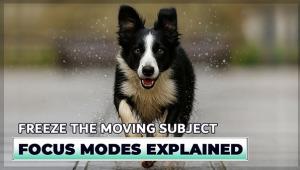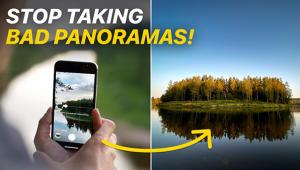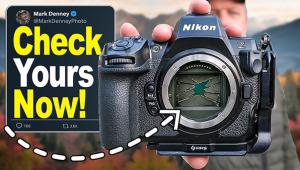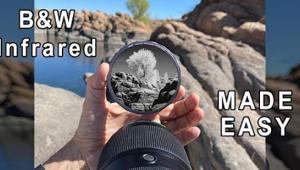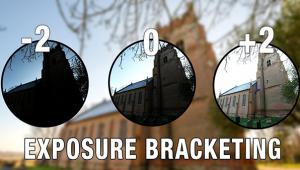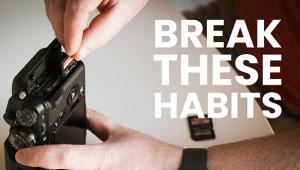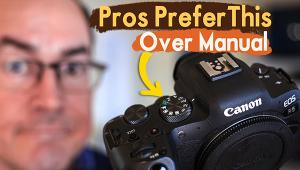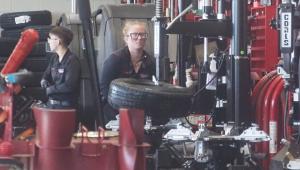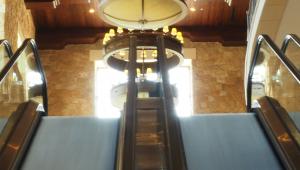I am really impressed with these portable film which is in one messenger bag, you could just hold it with your hands with no more hassles. - Carmack Moving and Storage
A Portable Field (Film) Camera Outfit…And It All Fits Into A Messenger Bag
It was when my knees began creaking that I came to realize it was time to stop hauling around a monorail 4x5” camera system in the field. Something smaller and lighter was needed.
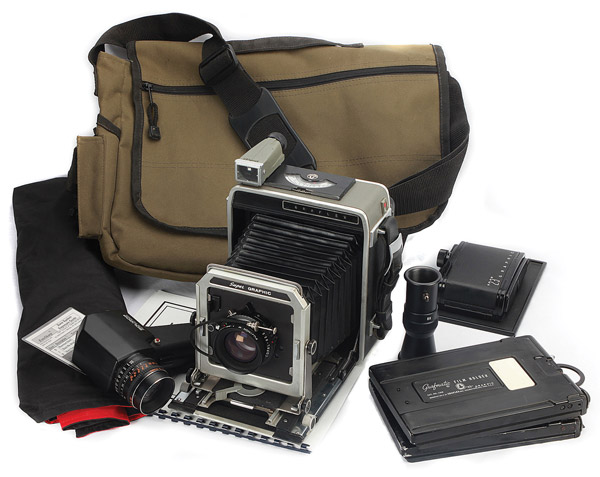
All Photos © Joel Beemer
Predictably, everyone said I should get a digital camera. But I already have a very nice digital camera that I use in the studio. And in the field, I want to produce high-quality black-and-white images with silvery tones. It requires real silver to produce silvery tones, and that’s something digital doesn’t offer without exotic processing. Also, digital cameras don’t offer perspective-control movements unless you buy expensive tilt-shift lenses.
The classic design of a folding flat-bed field camera was the answer. With the right lens, it can produce images equal in quality to the most expensive modern cameras. A photographer can straighten up buildings and increase depth of field by using the perspective-control movements that are built into the field-camera body. And the big, juicy negative opens a new world of creative artistry.
Using a 4x5” folding flat-bed camera as the starting point, I finally came up with an inexpensive outfit that fits into a small shoulder bag like those used by bicycle messengers in downtown metro areas. The bag contains the 4x5” camera and lens, film holders containing a dozen shots of 4x5” sheet film, a rollfilm holder for 120 film, a spot meter, magnifying eyeglasses, filters, a small flashlight, a compass, a focusing cloth, a magnifier for ground-glass focusing, etc. When the bag is closed, there is outside access to a zippered compartment in the flap for maps, a photographer’s almanac, etc. There is also a nifty pouch on the end of the bag for a cell phone.
That’s a lot of equipment for a bag that measures only about 13x10x6” when fully loaded.
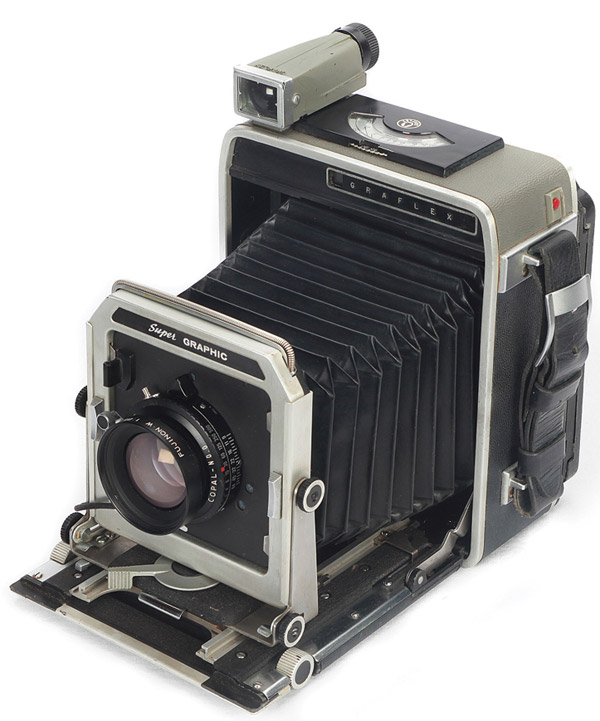
Camera Selection Process
Beginning with the camera, here is what’s in the bag and why it got there. All flat-bed field cameras are very similar in design and operation. Most are expensive. Some are very expensive. Even in used condition, the Wista, Horseman, Zone VI, Toyo, and Wisner are expensive. Linhof Technika and Ebony field cameras are very expensive. But fortunately, there is a way to reduce the expense involved with the camera body.
Some photographers have recognized the potential of press cameras like the Graflex Graphic, and are using them as bodies for field cameras. These cameras have a ground-glass focusing screen, can use lenses of various focal lengths, use the same 4x5” film holders as the new cameras, and can accept rollfilm holders. They are more compact than many fancy field cameras, and they can be stripped down for additional reductions in size and weight by removing the rangefinder and viewfinder, etc.
I tried a Crown Graphic with a modern multi-coated lens and got excellent images. Other models of 4x5” and 2 1/4x3 1/4” press cameras also can be used in this way. Be aware that Speed Graphics have an auxiliary focal-plane shutter, which adds more depth to the camera body. Also make sure the camera has a Graflok back, which allows mounting of rollfilm holders and other accessories. The Graflok back replaces the spring back found on early press cameras, and today the Graflok back is universally used by almost all makers of 4x5” cameras.
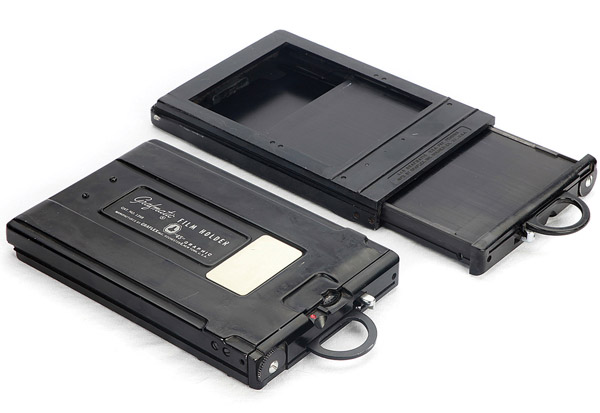
The only serious limitation of most Graphic press cameras is the lack of full perspective-control movements. Like most other Graphic models, the Crown had front rise, but very limited forward lens tilt and front fall, and no swing movement at all. Front rise is fairly good, but forward tilt and front fall were made possible only by dropping the front of the bed rail, a one-position adjustment that was created to keep the bed out of the picture when using a wide-angle lens.
Eureka!
Then I discovered the Graflex Super Graphic and Super Speed Graphic. These late-model Graphics have full front movements, including lens tilt, lens swing, rise, fall, and shift. (The only difference between the two models is that the “Super Speed” has a leaf shutter capable of 1/1000 sec.) These cameras have a strong and lightweight metal body, not wood like earlier models. They also have a revolving back, viewfinder, and rangefinder. There are no rear movements, which some expensive field cameras have, but the front movements will handle almost all situations. I purchased a nice Super Graphic a few months ago for $245, but the prices seem to be going up as more photographers are discovering the camera’s capabilities.
The lens I am using is a 135mm Fujinon W. This is the same focal length as the camera’s original lens, so it provides accurate focusing with the rangefinder. I dream of someday having one of the new 135mm Rodenstock APO Sironar S lenses ($1200) but the Fujinon will do perfectly fine until someday arrives.

Film Holder
With the camera chosen, the remaining issues involved fitting the rest of the outfit into the small shoulder bag. Regular two-sheet film holders were out of the question because they are too bulky. The best alternative was the Grafmatic film magazine. It is not like the Graphic film pack adapter, which will also fit on this camera. The Grafmatic holds six sheets of 4x5” film in six “septums” that keep the film perfectly flat. With a pull-push movement, the Grafmatic moves an exposed sheet to the bottom of the stack and a fresh sheet to the top. Ingenious.
The Grafmatic has indicators to show whether the top sheet is fresh or exposed and a counter to show shots remaining. It also burns an identification number (1-6) into the edge of each sheet when it is exposed. When all six sheets are exposed, the holder stops advancing. This prevents accidental double exposures.
The Grafmatic six-shooter is inserted under the ground-glass frame just like a regular film holder, with no need to remove the glass. Again, ingenious. This device was originally intended for press photographers who wanted to shoot six exposures in quick succession. I bought two Grafmatics for about $100 each. Both fit into the messenger bag, providing 12 shots on 4x5” sheet film.
Additional shooting capacity comes from a Graflex “23” 6x9cm (2 1/4”x 3 1/4”) format rollfilm holder for 120 film, which also fits into the bag. I bought one recently for $45. The rollfilm holder can be reloaded in daylight conditions, so total shooting capacity is limited only by how many 120 rolls can be carried along. Using the 6x9 format, a roll of 120 film will yield eight exposures.
The 6x12cm rollfilm format looks very appealing, as it utilizes the full 5” length of the camera format. Rollfilm holders for 6x12cm format yield six shots per roll of 120 film. Sinar has a 6x12 rollfilm holder, but it is too bulky for the messenger bag and too pricey for this project. There are new Chinese-made 6x12 holders available for $200 or so, and they may be worth considering. Most rollfilm holders mount to the Graflok back, which is accessible by popping off the ground-glass frame (simple and easy). One rollfilm holder, the Calumet C2, inserts into the camera back just like a regular two-shot film sheet film holder, so removing the ground glass is not necessary. It shoots the 6x7cm format.
Other Items
The Super Graphic camera has a flip-up hood to shade the ground glass, but this may not be adequate all the time. A conventional duck-under dark cloth for composing and focusing with the ground glass is more effective for critical work, especially when using the perspective-control movements. It is easy to remove the camera’s flip-up viewing hood for convenience. The focusing cloth is rolled up and stored at the bottom of the bag, where it provides cushioning.
Items like the spot meter, filters, flashlight, compass, eyeglasses, and 120 film fit into a plastic container inside the bag, which prevents these small items from migrating to the bottom. From the outside, a zippered compartment in the flap allows access to maps and a photographer’s almanac, while the bag’s ends have outside holders for a cell phone, etc.
Of course, this bag will not hold a tripod, much less the voluminous discussions and arguments related to this topic. But first consider that this camera is designed to be handheld most of the time, by press photographers. It has a viewfinder and a coupled rangefinder, and will deliver fine results when handheld at fast shutter speeds. At marginal shutter speeds, a photographer can “cheat” by bracing the camera against a stationary object or using a hiking-stick monopod. For many shots, it may not be necessary to carry a tripod.
Fine optics will put this old press camera on an equal footing with the most expensive 4x5 cameras, so cutting corners on lens selection is not a wise move. The lens you choose is the beginning of a “glass collection” that can be used on any 4x5” cameras you may buy in the future. If you buy a lens from any of the “big four” large format lens makers (Fuji, Schneider, Rodenstock, and Nikon), you will be satisfied.
The lens completes this outfit and makes you capable of producing images of very fine quality. The next step is to hang the bag on your shoulder and go shooting!
About The Author
Joel Beemer lives in the Black Hills of western South Dakota. His professional background as a writer, photographer, and editor began with a degree in journalism. To contact Beemer, e-mail him at: mtnman@midco.net.
- Log in or register to post comments




